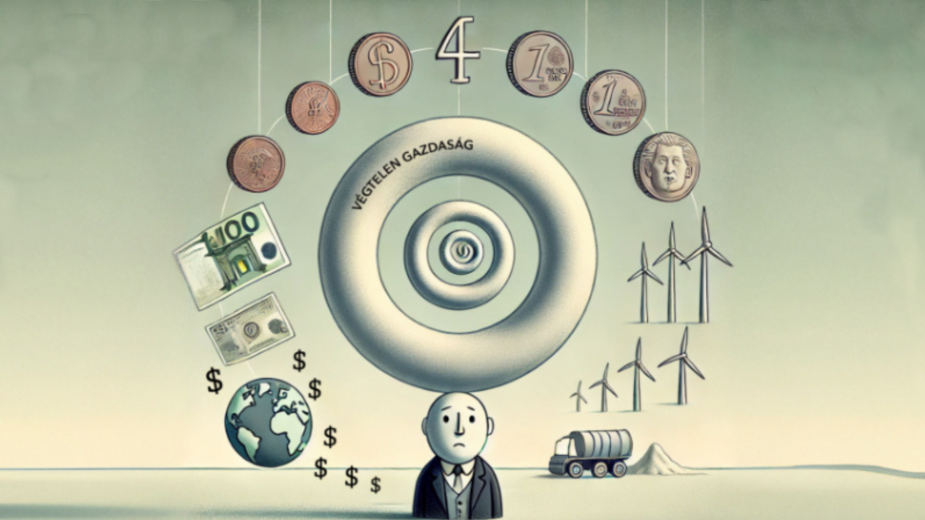
On the 7th of February, we celebrate the symbol of irrationality, on the International Day of Irrational Numbers, also known as the day of Euler number—which gives us an excellent opportunity to reflect on the fundamental characteristic of our economic system. But what does an irrational number have to do with our monetary system? More than we may think.
Euler’s number is a symbol of irrationality: a number whose decimal places continue infinitely without repetition. Similarly, the modern credit-based monetary system is built on continuous growth. Essentially, credit money is nothing more than a promise of future repayment, which generates further loans thereby creating continuous growth.
However, this irrational growth also brings challenges. The ever-expanding money supply exerts pressure on natural resources, because our economic system is closely intertwined with energy consumption and material production. Therefore, it is essential to rethink economic growth not only in quantitative but also in qualitative terms.
The transition to renewable energy sources and recycling is not just an environmental necessity but an economic one as well. As the infinity of Euler’s number reflects the fascinating complexity of mathematics, the universe itself is a marvel of intricate order and disorder. similarly, we must find a balance between economic growth and sustainability.
This special day serves as a reminder that the infinite growth tendency of our monetary system is unsustainable in a world of finite resources. Understanding the relationship between innovation, a sustainable economy, and ecological balance is crucial to building a future that is stable not only economically but also environmentally.
Euler’s number, also known as the e constant, was named after Swiss mathematician and physicist Leonhard Euler. However, it is also known by another name: the "Napier constant," in honour of Scottish mathematician John Napier. The first reference to the e number appeared in Napier’s work of logarithms in 1618.
Further news
All newsThank you for your kind understanding!
The success of the HUNOR Program is now on display in the exhibition space
The Tarnay family brought silver bowls
Thank you for your kind understanding!
Thank you for your kind understanding!
The success of the HUNOR Program is now on display in the exhibition space
The Tarnay family brought silver bowls
Thank you for your kind understanding!



